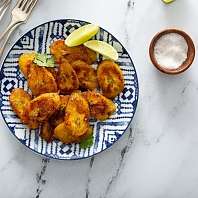Romantik Blog
The Ladin language

The treasure of the Dolomites is hidden in five valleys: Val Badia, Val Gardena, Val di Fassa, Buchenstein and Ampezzo. All of them are located in the Italian part of Tyrol, shaded by the Sella massif, which rises up to 3,152 metres. In these remote areas, which used to be difficult to reach, an almost forgotten language has managed to survive! Ladin, over 2,000 years old and once the most widespread language in the Alps. Today it is only spoken by around 30,000 people.
The origin of this mixture of Rhaeto-Romanic and Latin dates back to 15 BC. At that time, the Roman commander Drusus conquered the region. In addition to Roman law, he brought with him above all the Latin language, which survived in Ladin.
Today, Ladin is once again taught in the schools in the valleys of the so-called Dolomite Ladins. Museums tell their story, the old traditional costumes are worn at festivals by all generations, the Ladins are proud of their long history.
For holiday guests, language courses are even offered in the region, and the traditional, down-to-earth Ladin cuisine continues to be cultivated: in the long-established families, but also in courses for interested amateur cooks. Here, participants learn everything about regional specialities such as Schlutzkrapfen (stuffed ravioli), Tultres (dumplings filled with sauerkraut or spinach and ricotta) or cheese dumplings. A treasure from the Dolomites - linguistically, culturally and culinary valuable and unique!
What does Ladin mean ...?
Good day // Bun dé
Good evening // Buna sëra
Good night // Buna nöt
How are you // Co vara pa?
Thank you // Giulan
Goodbye // A s'udëi


Ladin cuisine - long tradition and full of flavour
Traditional gastronomy in the five Ladin valleys has its roots in the peasant cuisine of the ancestors. The remote regions in the Italian part of Tyrol used to be difficult to access. Here, not only has an almost forgotten language survived in Ladin, but also a lot of culture and tradition. This also includes the cuisine with its down-to-earth dishes, whose preparation and recipes have been passed down from generation to generation for centuries.
It was hard work to wring something from the barren soils on the slopes of the Dolomites. Just as in the past, regional products still form the basis of dishes that are still served today in the long-established families or are on the menu in the restaurants.
Many places also offer courses for amateur cooks on how to prepare classics such as bales (dumplings), Schlutzkrapfen (ravioli filled with spinach), furtaies (spiral-shaped, deep-fried dessert) or the most famous speciality of the Dolomite valleys - the popular turtres. These are deep-fried dumplings with a filling of spinach and ricotta. But there are also preparations with a sauerkraut or potato filling. Many Ladins see turtres as a symbol of their own, often hardscrabble history: making the best of what you find with creativity and energy.
Turtres from the Ladin valleys - a simple dish with simple ingredients that is particularly popular in cooking debts. Because it tastes good, has a long tradition and can be recreated without much effort.
Recipe for 4 people
Ingredients for the dough: 300 grams of flour, 1 egg, 30 grams of butter, a little milk.
Ingredients for the filling: 150 grams blanched spinach, 150 grams cottage cheese (curd), 1 leaf sage, 1 tablespoon chives, nutmeg, pepper, pinch of salt.
Preparation: Mix flour, egg, salt and butter together. Add a little milk a little at a time, mix everything into a smooth dough and knead. Then form into an elongated roll about four to five centimetres in diameter. Cut off small pieces and roll out into a round dough patty 12 to 15 centimetres in diameter.
Finely chop the blanched spinach and mix with the quark. Chop the garlic, sage and chives very finely and mix with the quark and spinach mixture. Season with salt, pepper and nutmeg.
For each turtres, spread a tablespoon of this mixture in the centre of a pastry patty and cover with another pastry patty. Press the edges together. Fry in hot oil. Turn the turtres when the underside is light brown. Drain off the oil before eating.
Post your comment
Comments
No one has commented on this page yet.
RSS feed for comments on this page RSS feed for all comments



